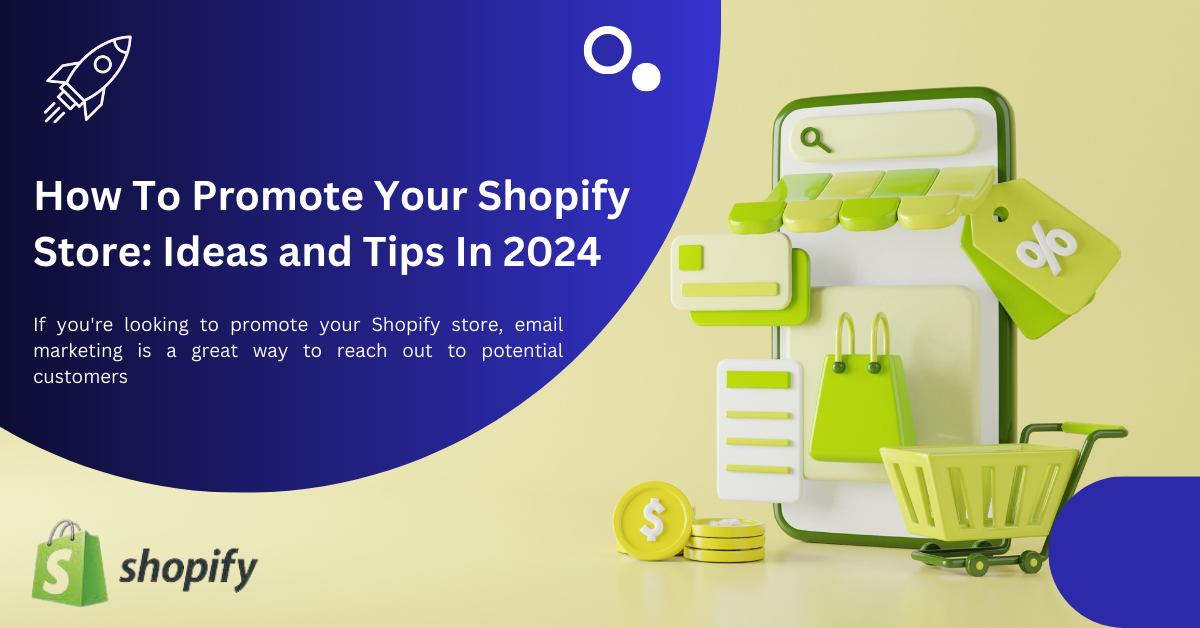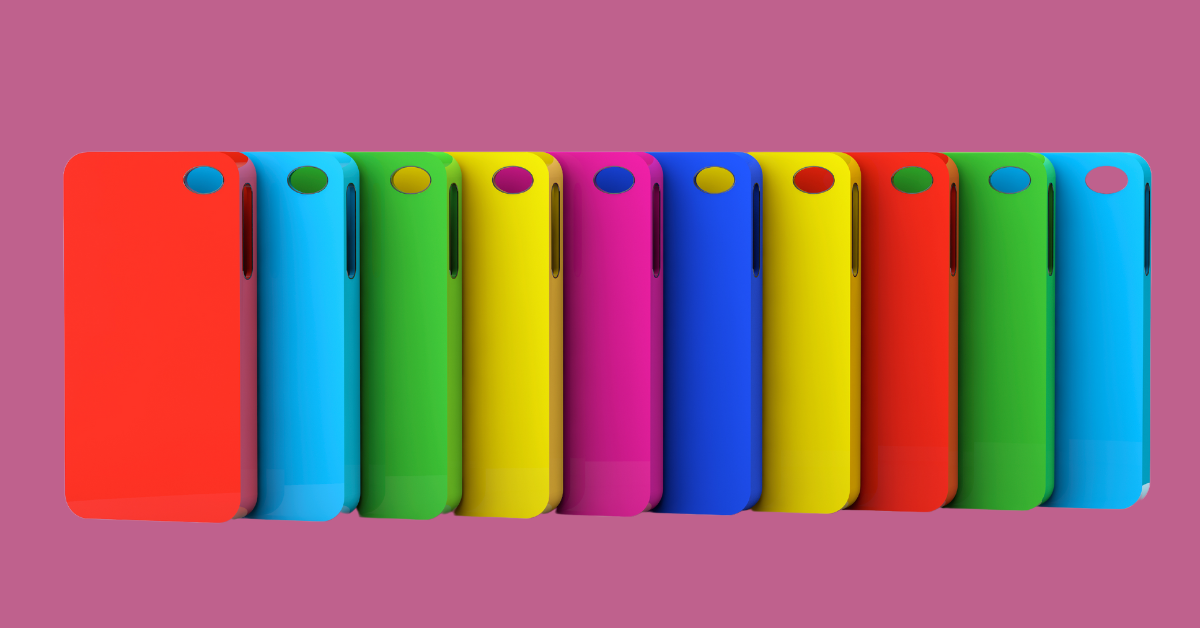Effective store promotion is crucial for the success of any Shopify business. With so many online stores competing for customers’ attention, it can be challenging to stand out and attract new customers. This is where store promotion comes in, as it helps to increase brand visibility, drive traffic to your store, and ultimately increase sales.
However, standing out in a crowded online marketplace can be challenging. You need to have a solid understanding of your target audience, create engaging content, and use effective marketing strategies to get noticed.
Strategies for Promoting Your Shopify Store
In this article, we will explore some proven store promotion strategies that can help you increase your Shopify store’s visibility and attract new customers. These include optimizing your store for search engines, leveraging social media, running targeted ads, and offering promotions and discounts. By using these strategies effectively, you can set your store apart from the competition and drive more sales.
1. Email Marketing
If you’re looking to promote your Shopify store, email marketing is a great way to reach out to potential customers. One effective strategy is to build an email list by providing clear opt-in forms on your website. This will allow people who are interested in your products to sign up to receive updates and promotions from your store.
Once you have a list of subscribers, you can create engaging and personalized email campaigns that will encourage them to visit your Shopify store and make a purchase. Be sure to segment your email list based on customer interests and behavior to make your messages more targeted and relevant.
What type of communication is ideal for email marketing?
Here are some general tips for ideal email marketing communication:
- Personalize: Use subscriber names, segment your list, and tailor messages to specific demographics.
- Be clear and concise: Get to the point quickly and avoid jargon or overly technical language.
- Focus on benefits: Highlight what your product or service can do for the reader.
- Use a conversational tone: It sounds like you’re talking to a friend, not a robot.
- Tell stories: Use anecdotes, case studies, or examples to engage readers emotionally.
- Proofread carefully: Typos and grammatical errors can damage your credibility.
- Optimize for mobile: Most emails are now opened on mobile devices, so ensure proper formatting and readability.
- Call to action (CTA): Tell the reader what you want them to do next, whether it’s visiting your website, making a purchase, or subscribing to your blog.
Remember, the ideal communication style is ultimately the one that resonates with your target audience and helps you achieve your marketing goals. A/B testing different approaches and analyzing results can help you refine your communication and optimize your email marketing campaigns for success.
2. Content marketing
Content marketing is the process of creating and distributing valuable, relevant, and consistent content to attract and retain a clearly defined audience – and, ultimately, to drive profitable customer action.
It is a strategic approach to marketing that focuses on creating and sharing valuable, relevant, and engaging content that can help businesses connect with their target audience.
How do you promote your Shopify store through content marketing?
1. Create a blog: Start a blog on your Shopify store and post high-quality content that is relevant to your target audience. Use SEO techniques to optimize your blog for search engines so that your content shows up in search results.
2. Guest posting: Reach out to other bloggers and websites and ask if you can write a guest post for them. In exchange, you can include a link back to your Shopify store in your author bio.
3. Social media marketing: Share your blog posts and other content on social media platforms like Facebook, Twitter, Instagram, and LinkedIn. Use hashtags and other tactics to reach a wider audience.
4. Video marketing: Create videos that showcase your products or offer tutorials and share them on YouTube and other video-sharing platforms. Videos are a great way to engage with your audience and increase brand awareness.
5. Email marketing: Build an email list of subscribers who are interested in your products and services. Send them regular newsletters and promotional emails that offer exclusive discounts, sales, and other incentives.
6. Influencer marketing: Partner with influencers who have a large following on social media and ask them to promote your products. This is a great way to reach a wider audience and increase brand awareness.
3. Social media marketing
Mastering the art of social media marketing is an indispensable endeavor for businesses seeking not just visibility but genuine connection with their audience. As platforms like Facebook, Instagram, Twitter, and Pinterest continue to shape the digital landscape, navigating the intricacies of social media marketing becomes essential for establishing a robust online presence.
How do you advertise your Shopify store through social media?
1. Choose the right social media platforms: Determine which social media platforms your target audience uses the most and focus your efforts on those platforms.
2. Create a business profile: Create a business profile on each social media platform you plan to use. Use high-quality images and a clear description of your business.
3. Post regularly: Post regular updates, including product images, promotions, and other engaging content. Use hashtags and other tactics to increase visibility.
4. Engage with your followers: Respond to comments and messages promptly. Engage with your followers by asking questions and encouraging them to share their thoughts.
5. Use paid advertising: Use paid advertising on social media platforms like Facebook, Instagram, and Twitter to reach a wider audience. You can target your ads based on demographics, interests, and other criteria.
6. Partner with influencers: Partner with influencers who have a large following on social media and ask them to promote your products. This is a great way to reach a wider audience and increase brand awareness.
7. Analyze your results: Use analytics tools to track your social media performance. Analyze your results to determine what’s working and what’s not and adjust your strategy accordingly.
4. Paid Ads on Search Engines
Paid advertising is a great way to advertise your Shopify store through social media. Here are some steps to follow:
1. Determine your advertising goals: Determine what you want to achieve with your ads. This could be increasing website traffic, generating leads, or boosting sales.
2. Choose your social media platform: Choose the social media platform that is most relevant to your target audience. For example, if you are targeting a younger demographic, Instagram or Snapchat may be a better choice than Facebook.
3. Define your target audience: Define your target audience based on demographics, interests, and other criteria. This will help you to create ads that are relevant to your target audience.
4. Create your ad: Create an ad that is visually appealing and includes a clear call to action. Use high-quality images and videos that showcase your products or services.
5. Set your budget: Set a budget for your ads and determine how much you are willing to spend per day or per ad.
6. Monitor and adjust your ads: Monitor your ads regularly to see how they are performing. Adjust your ads as needed to improve their performance.
7. Measure your results: Use analytics tools to track the performance of your ads. Analyze your results to determine what’s working and what’s not and adjust your strategy accordingly.
How do you promote your Shopify store through paid ads?
There are several types of ads that you can use to promote your Shopify store. Here are some examples:
1. Image ads: These ads feature a single image and are commonly used on social media platforms like Facebook and Instagram.
2. Video ads: These ads feature a video and can be highly engaging. They are commonly used on social media platforms like Facebook, Instagram, and YouTube.
3. Carousel ads: These ads feature multiple images or videos that users can scroll through. They are commonly used on social media platforms like Facebook and Instagram.
4. Collection ads: These ads showcase a collection of products and allow users to browse and purchase products directly from the ad. They are commonly used on social media platforms like Facebook and Instagram.
5. Display ads: These ads appear on websites and can feature images, videos, or text. They are commonly used for remarketing to customers who have visited your website.
6. Search ads: These ads appear at the top of search engine results pages and are triggered by specific keywords. They are commonly used with Google Ads.
7. Retargeting ads: These ads are shown to customers who have already visited your website or added products to their cart. They are designed to bring customers back to your website to complete their purchase.
Remember to choose the ad type that is most relevant to your target audience and advertising goals.
How do you launch a Google Ads campaign?
Launching a Google Ads campaign can be a great way to promote your Shopify store. Here are the steps to launch a Google Ads campaign:
1. Set up a Google Ads account: If you don’t already have a Google Ads account, you’ll need to create one. Go to the Google Ads homepage and click on “Start Now” to get started.
2. Choose your campaign type: Choose the type of campaign you want to run. For example, you can choose a search campaign, display campaign, or shopping campaign.
3. Define your target audience: Define your target audience based on demographics, interests, and other criteria. This will help you to create ads that are relevant to your target audience.
4. Set your budget: Determine how much you are willing to spend on your ads. Set a daily or weekly budget and make sure to stick to it.
5. Choose your keywords: Choose the keywords that you want your ads to appear for. Use keyword research tools to find keywords that are relevant to your products or services.
6. Create your ad: Create an ad that is visually appealing and includes a clear call to action. Use high-quality images and videos that showcase your products or services.
7. Set your bid: Set your bid for each keyword based on how much you are willing to pay for each click.
8. Launch your campaign: Once you have set up your campaign, you can launch it and start running your ads.
Remember to monitor your campaign regularly to see how it is performing and adjust your strategy as needed. Use analytics tools to track your performance and measure your results.
5. Influencer marketing
Influencer marketing is a type of marketing that involves partnering with individuals who have a large following on social media and who can promote your brand to their followers. Influencers can be bloggers, social media stars, celebrities, or experts in a particular field.
To utilize influencer marketing to promote your Shopify store, you can follow these steps:
1. Define your target audience: Define your target audience based on demographics, interests, and other criteria. This will help you to find influencers who have a following that is relevant to your business.
2. Identify potential influencers: Use social media platforms like Instagram, YouTube, and TikTok to identify potential influencers who have a large following within your target audience.
3. Reach out to influencers: Reach out to influencers and introduce yourself and your brand. Explain why you think they would be a good fit for your brand and offer to collaborate on a sponsored post or campaign.
4. Set your budget: Determine how much you are willing to pay for influencer collaborations. This can vary depending on the size of the influencer’s following and the scope of the collaboration.
5. Define your collaboration terms: Define the terms of your collaboration with the influencer. This can include the type of content the influencer will create, the number of posts, and the timeline for the collaboration.
6. Review and approve the content: Review and approve the content that the influencer creates before it is posted. Make sure that it aligns with your brand values and messaging.
7. Measure your results: Use analytics tools to track the performance of your influencer campaigns. Analyze your results to determine what’s working and what’s not and adjust your strategy accordingly.
Remember that it’s important to choose influencers who have a genuine connection with their followers and who align with your brand values. This will help to ensure that your influencer collaborations are authentic and effective.
6. Customer Loyalty Programs
Customer loyalty programs are a marketing strategy designed to reward repeat customers and incentivize them to continue buying from your business. They’re a powerful tool for building stronger relationships, increasing customer lifetime value, and ultimately boosting your bottom line. Here’s a breakdown of key aspects:
Benefits:
- Increased customer retention: Loyalty programs encourage repeat business, reducing costs associated with acquiring new customers.
- Higher customer lifetime value: Loyal customers spend more over time, leading to increased revenue.
- Enhanced brand loyalty: Rewards and recognition cultivate positive brand feelings and advocacy.
- Valuable customer data: Insights gathered through program interactions help personalize marketing efforts.
- Improved customer acquisition: Loyalty programs can attract new customers through referral programs and positive word-of-mouth.
Types of programs:
- Points-based: Customers earn points for purchases, redeemable for rewards like discounts, free products, or exclusive experiences.
- Tiered: Customers progress through tiers based on spending or activity, unlocking increasing benefits at each level.
- Value-based: Rewards are based on customer lifetime value, offering personalized benefits to high-value customers.
- Subscription-based: Customers pay a recurring fee for exclusive access to discounts, early access to new products, or other perks.
- Referral programs: Customers earn rewards for referring new customers, expanding their reach and customer base.
Key considerations:
- Target audience: Understand your ideal customer and tailor the program’s value proposition accordingly.
- Rewards: Choose valuable and relevant rewards that resonate with your audience.
- Program costs: Balance the cost of rewards and administration with the expected return on investment.
- Integration: Ensure seamless integration with your existing technology and marketing systems.
- Communication: Clearly communicate program benefits, rules, and redemption options to customers.
- Personalization: Utilize data to personalize rewards and communication based on individual customer preferences.
Additional tips:
- Track and analyze program performance: Regularly evaluate the program’s impact on key metrics like customer retention and revenue.
- Offer exclusive experiences: Go beyond traditional rewards and create unique experiences that strengthen customer relationships.
- Partner with other businesses: Collaborate with complementary businesses to offer broader rewards and reach new audiences.
- Make it fun and engaging: Gamification elements can keep customers actively participating in the program.
- Show appreciation: Express gratitude to loyal customers beyond just the program mechanics.
Remember, customer loyalty programs are a long-term investment. By implementing a well-designed and well-managed program, you can cultivate lasting relationships with your customers, drive sustainable growth, and achieve your business goals.
7. Offline marketing
Offline marketing encompasses any promotional activity that exists primarily outside the internet. This includes:
- Print advertising: Newspapers, magazines, brochures, flyers, etc.
- Broadcast advertising: TV, and radio commercials.
- Outdoor advertising: Billboards, bus stop ads, transit advertising.
- Events and sponsorships: Trade shows, conferences, community events.
- Direct mail: Postcards, catalogs, personalized letters.
- Public relations: Press releases, media outreach, community engagement.
Tips for effective offline marketing:
- Define your goals and target audience: What do you want to achieve and who are you trying to reach?
- Choose the right mix of channels: Consider your budget, target audience, and campaign goals.
- Track and measure results: Use data to understand what’s working and make adjustments.
- Integrate with online marketing: Create a seamless user experience across all channels.
- Think outside the box: Explore creative and innovative offline marketing tactics.
Examples of successful offline marketing:
- Red Bull: Sponsors extreme sports events and athletes, creating a brand associated with adventure and energy.
- GoPro: Partners with travel influencers and creates user-generated content showcasing its cameras in action.
- Dove: Runs body positivity campaigns in public spaces, sparking conversations and brand engagement.
Remember, offline marketing can be a valuable tool in your marketing toolbox. By understanding its benefits, choosing the right strategies, and integrating them with your online efforts, you can reach a wider audience, build stronger brand relationships, and achieve your marketing goals.
8. Partnerships with Other Brands
Collaborating with other brands can be a strategic move to unlock new opportunities and propel your business forward. However, with diverse partnership types and considerations, navigating this field requires careful planning and execution. Here’s a breakdown to help you understand the potential and navigate the world of brand partnerships:
Benefits of Brand Partnerships:
- Expanded reach and audience: Tap into your partner’s customer base, accessing new demographics and interests.
- Enhanced brand credibility and trust: Leverage the established reputation of your partner.
- Increased brand awareness and visibility: Gain exposure through your partner’s marketing channels and networks.
- Shared resources and expertise: Combine strengths and knowledge for more impactful campaigns or product development.
- Cost-effective marketing: Share promotion and advertising expenses, reaching a wider audience at a lower cost.
- Innovation and creativity: Inject fresh ideas and perspectives into your brand strategy.
Types of Brand Partnerships:
- Co-marketing: Joint marketing campaigns to promote each other’s products or services.
- Co-branding: Develop and market a product or service under both brands.
- Affiliate marketing: Earn commissions by promoting your partner’s products on your platform.
- Influencer marketing: Collaborate with individuals with relevant audiences to promote your brand.
- Event sponsorships: Partner with events relevant to your target audience.
- Joint ventures: Create a new entity to pursue a specific business opportunity.
Key Considerations for Successful Partnerships:
- Target audience alignment: Ensure your partner’s audience aligns with your target market.
- Brand and value fit: Partner with brands that share your values and brand image.
- Clear goals and expectations: Define objectives, roles, responsibilities, and success metrics.
- Transparent communication: Maintain open communication throughout the partnership.
- Contractual agreements: Establish clear terms and conditions to avoid misunderstandings.
- Measurement and evaluation: Track and analyze results to assess effectiveness and make adjustments.
Examples of Successful Brand Partnerships:
- Red Bull and GoPro: Their partnership showcases GoPro cameras in action during extreme sports, benefiting both brands.
- Spotify and Starbucks: Offer integrated music streaming and in-store purchase experiences.
- Lego and Adidas: Co-created a line of sneakers inspired by Lego bricks.
Finding the Right Partner:
- Identify potential partners: Look for brands with complementary audiences, values, and goals.
- Network and attend industry events: Build relationships and explore potential collaborations.
- Utilize online platforms: Consider platforms connecting brands for partnerships.
- Start small and test collaborations: Before large-scale commitments, pilot projects can evaluate compatibility.
Remember, successful brand partnerships require careful planning, clear communication, and mutual respect. By aligning your goals, choosing the right partner, and executing effectively, you can unlock the potential for amplified reach, enhanced brand image, and accelerated growth.
Deciding How to Advertise Your Shopify Store
Advertising your Shopify store effectively requires navigating a plethora of options, each with its own strengths, weaknesses, and costs. To make an informed decision, consider these crucial factors:
1. Target Audience:
- Who are you trying to reach? Understanding their demographics, interests, and online behavior is essential.
- Where are they most active online? Different platforms cater to different audiences. Social media demographics vary, search engines target specific queries, and email marketing reaches opted-in individuals.
2. Budget:
- How much can you realistically afford to allocate towards advertising? Factor in campaign costs, platform fees, and potential return on investment (ROI).
- Set clear goals and KPIs (key performance indicators) to measure success and assess ROI.
3. Advertising Goals:
- Do you want to increase brand awareness, drive website traffic, boost sales, or generate leads? Different strategies excel in different areas.
4. Available Resources:
- Do you have the time and expertise to manage your campaigns in-house, or will you outsource? Consider the cost and benefits of each option.




